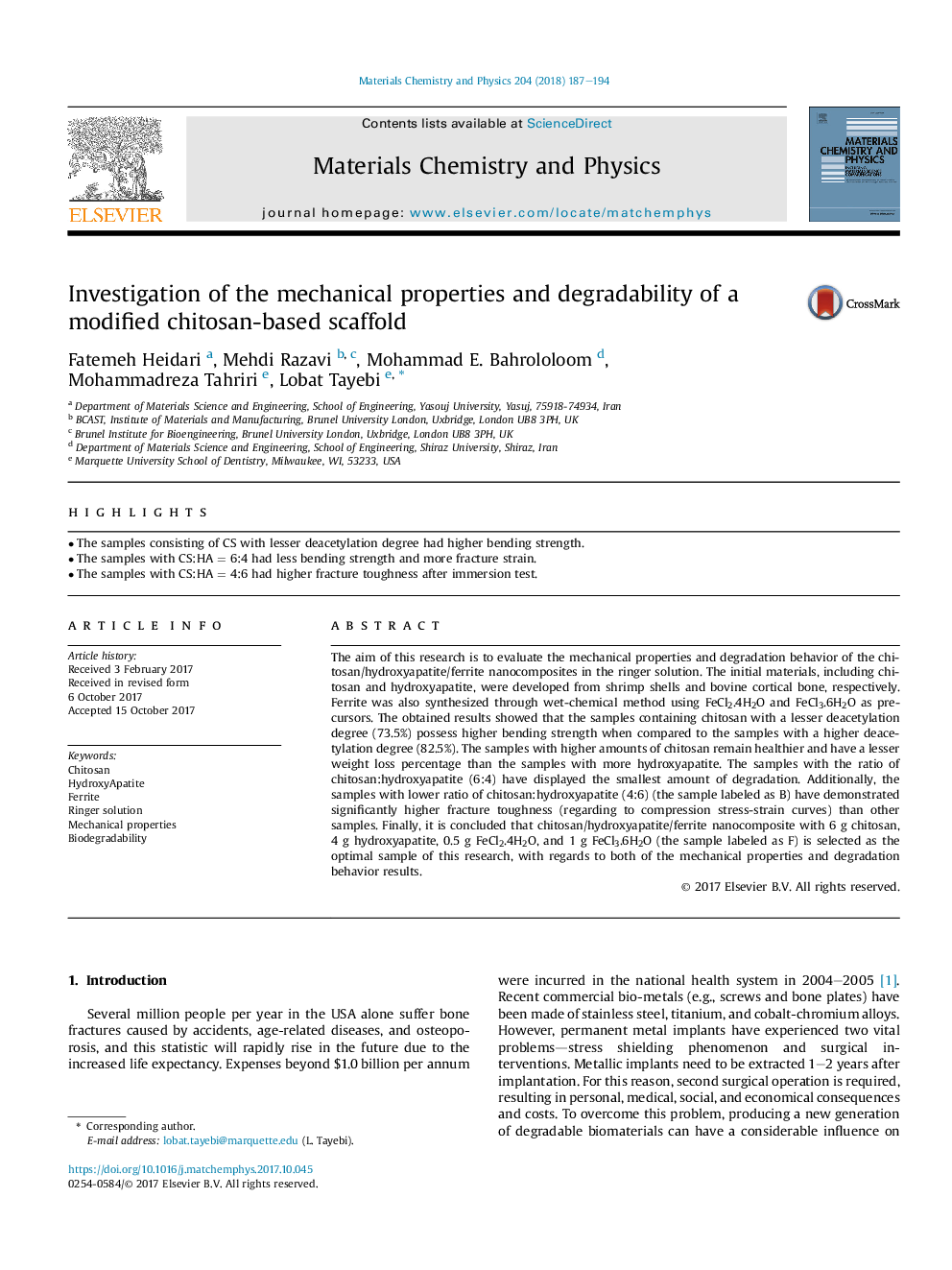| Article ID | Journal | Published Year | Pages | File Type |
|---|---|---|---|---|
| 7922336 | Materials Chemistry and Physics | 2018 | 8 Pages |
Abstract
The aim of this research is to evaluate the mechanical properties and degradation behavior of the chitosan/hydroxyapatite/ferrite nanocomposites in the ringer solution. The initial materials, including chitosan and hydroxyapatite, were developed from shrimp shells and bovine cortical bone, respectively. Ferrite was also synthesized through wet-chemical method using FeCl2.4H2O and FeCl3.6H2O as precursors. The obtained results showed that the samples containing chitosan with a lesser deacetylation degree (73.5%) possess higher bending strength when compared to the samples with a higher deacetylation degree (82.5%). The samples with higher amounts of chitosan remain healthier and have a lesser weight loss percentage than the samples with more hydroxyapatite. The samples with the ratio of chitosan:hydroxyapatite (6:4) have displayed the smallest amount of degradation. Additionally, the samples with lower ratio of chitosan:hydroxyapatite (4:6) (the sample labeled as B) have demonstrated significantly higher fracture toughness (regarding to compression stress-strain curves) than other samples. Finally, it is concluded that chitosan/hydroxyapatite/ferrite nanocomposite with 6Â g chitosan, 4Â g hydroxyapatite, 0.5Â g FeCl2.4H2O, and 1Â g FeCl3.6H2O (the sample labeled as F) is selected as the optimal sample of this research, with regards to both of the mechanical properties and degradation behavior results.
Related Topics
Physical Sciences and Engineering
Materials Science
Electronic, Optical and Magnetic Materials
Authors
Fatemeh Heidari, Mehdi Razavi, Mohammad E. Bahrololoom, Mohammadreza Tahriri, Lobat Tayebi,
